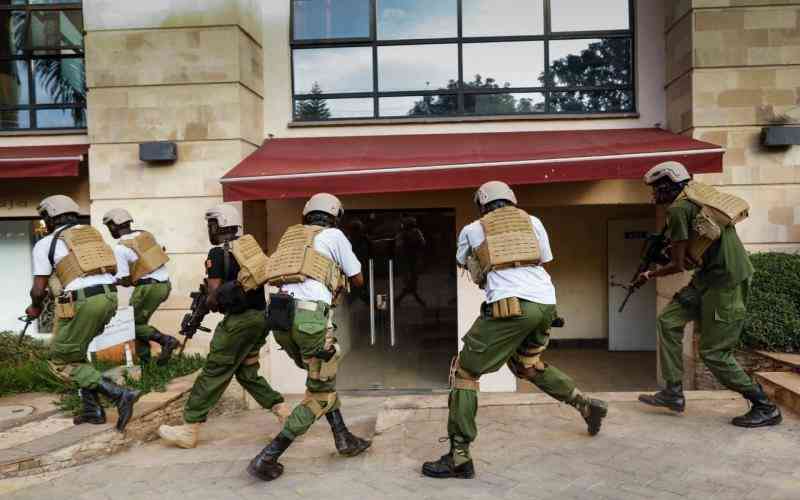Question: What is autopsy or post-mortem and what does it entail?
Answer: A post-mortem is a systematic and scientific examination of a body, which involves its dissection by a pathologist to determine a number of things.
When the death of an individual raises questions or is suspected to have been caused by somebody, the law demands a legal autopsy be conducted. In this case the consent of the deceased relatives is not required.Q: Why is a post-mortem necessary in solving a crime?
A: It is important in determining the exact cause of death and will explain the circumstances under which death occurred.
An autopsy will also determine the manner of death and pin the estimated time of death, the type of weapon used if it homicide or the poison used.
In some instances where the deceased is unknown, it can help in identifying the deceased. This is possible in countries like United States where they have a DNA data bank.Q: How can a post-mortem help solve crime?
A: An autopsy on its own cannot solve a crime. It forms part of investigation, as the forensic pathologist must have some history of the crime.
Unfortunately in Kenya, the police have not perfected the art of handling the scene of crime. Ideally, a pathologist should visit the scene of murder before the body is removed to the mortuary.
Conventionally, only a doctor can confirm a death. When a pathologist visits the scene, he or she correlates what was on the scene.Q: Are there Instances when an autopsy fails to yield answers?
A: A post-mortem will not yield all the answers the investigators want. In homicide, forensic pathologists issue preliminary reports because some findings may call for further investigation.
It is not possible, for instance, for a pathologist to say a person has been poisoned until they get toxicology reports from a laboratory.
In rape and homicide cases, an analysis of the material from the genital area of the deceased must be conducted.
It is also to establish whether there are foreign tissues under the fingernails. This can lead to the identification of the homicidal rapist.
It is not possible to get crucial answers from extensively decomposed bodies. Skeletal remains too will not be very useful. If a person dies from shock, it is very difficult to capture this during post mortem because the heart will appear normal.
At times when chemicals are used to preserve the body, this may interfere with the post-mortem and compromise results if the death was chemically induced.
Stay informed. Subscribe to our newsletter
It is, therefore, imperative in forensic autopsy that no chemicals are injected into the body. Instead it should be preserved in a refrigerator. Q: Who should meet the cost of a post-mortem in a murder case?
A: Under normal circumstances, this cost should be shouldered by the state. The state has an interest in determining the cause of death. Until forensic autopsy has been conducted, the body belongs to the state.
The autopsy too is conducted by public pathologists on behalf of the police and is carried out in a government hospital.
However, there have been cases where government pathologists charge the deceased’s family for the examination, which is wrong. Q: Who should witness a post-mortem and is it necessary to have a private forensic pathologist or lawyer representing the family?
A: Ideally, it is not necessary to have private pathologists representing families.
The trend to hire private pathologists has been caused by a misconception that government pathologists are involved in murder cover up.
A lawyer representing a family in an autopsy serves no role as he has no expertise in forensic pathology.
Family members too should not attend because it is traumatic to watch a relative being dissected. At times some grieving relatives have collapsed during post-mortems.
 The Standard Group Plc is a
multi-media organization with investments in media platforms spanning newspaper
print operations, television, radio broadcasting, digital and online services. The
Standard Group is recognized as a leading multi-media house in Kenya with a key
influence in matters of national and international interest.
The Standard Group Plc is a
multi-media organization with investments in media platforms spanning newspaper
print operations, television, radio broadcasting, digital and online services. The
Standard Group is recognized as a leading multi-media house in Kenya with a key
influence in matters of national and international interest.
 The Standard Group Plc is a
multi-media organization with investments in media platforms spanning newspaper
print operations, television, radio broadcasting, digital and online services. The
Standard Group is recognized as a leading multi-media house in Kenya with a key
influence in matters of national and international interest.
The Standard Group Plc is a
multi-media organization with investments in media platforms spanning newspaper
print operations, television, radio broadcasting, digital and online services. The
Standard Group is recognized as a leading multi-media house in Kenya with a key
influence in matters of national and international interest.









